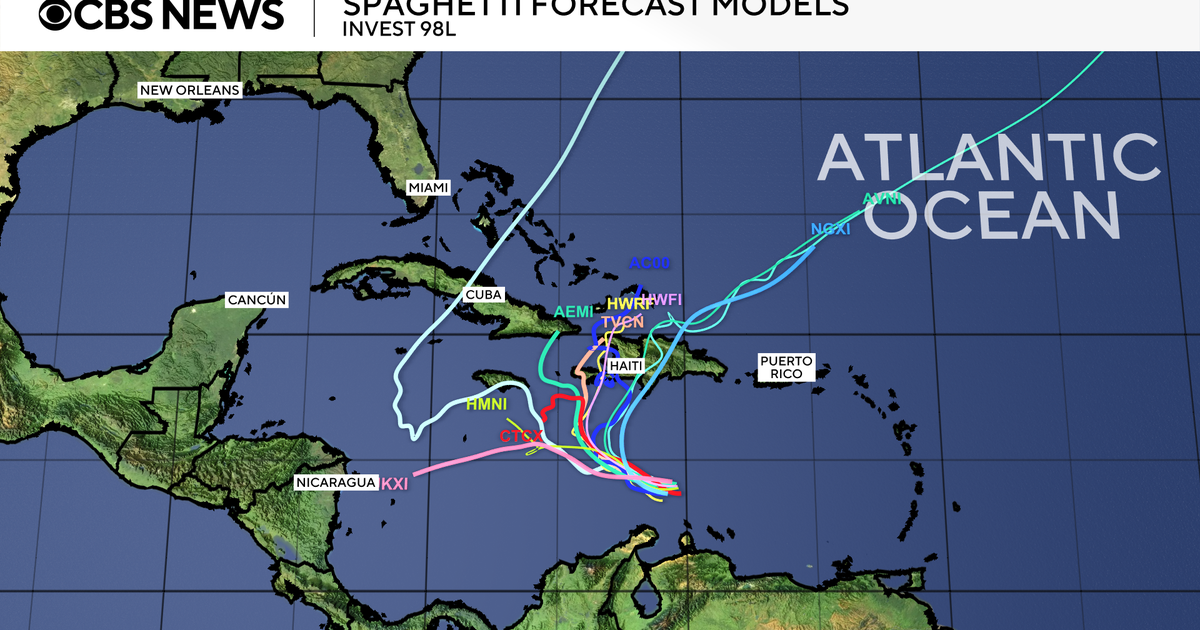Tropical Storm Melissa has formed in the Caribbean, the Miami-based National Hurricane Center said Tuesday morning.
Melissa, the 13th named storm in the Atlantic this year, is not expected to have major impacts on the mainland United States, but models show multiple potential paths.
Here’s what to know about Tropical Storm Melissa.
Models do not agree on where Melissa may head, CBS News meteorologist Nikki Nolan said. A spaghetti model shows multiple options for the storm. Many versions of the model show the storm passing over Haiti, though it’s also possible Melissa travels over Cuba or turns toward Central America.
The storm is already producing winds up to 45 miles per hour, according to the hurricane center.
The Weather Channel said there are three potential outcomes for the storm’s path: It could make a quick northward turn, continue to drift west or do a combination of both.
If the storm turns north quickly, Melissa could strengthen, pass over Hispaniola, and abruptly move northeastward over the central Atlantic Ocean by early next week. The Weather Channel said this scenario remains possible. If the storm continues to head west, it will pass over Central America. The chance of the storm taking this path “appears to be low,” the Weather Channel said.
The odds of the storm going west, slowing down over the Caribbean and later turning northeast are “increasing,” the Weather Channel said. That course could affect Jamaica, the Cayman Islands, the Bahamas and Cuba, the Weather Channel said.
The storm is expected to slow down over the central Caribbean Sea, according to the NHC. Melissa “has the potential to be a long, drawn-out affair lasting well into next week,” the Weather Channel said. Puerto Rico, Hispaniola, Jamaica and Cuba should prepare for heavy rain, strong winds, flooding and rough surf, Nolan and the NHC said.
Tropical Storm Melissa is currently unlikely to impact the mainland United States. The threat “appears to be low, but not zero,” the Weather Channel said.
The spaghetti model for the storm does not show it approaching South Florida or the rest of the U.S. mainland as of now. The storm also looks unlikely to strongly impact the U.S. territories of Puerto Rico and the Virgin Islands.




